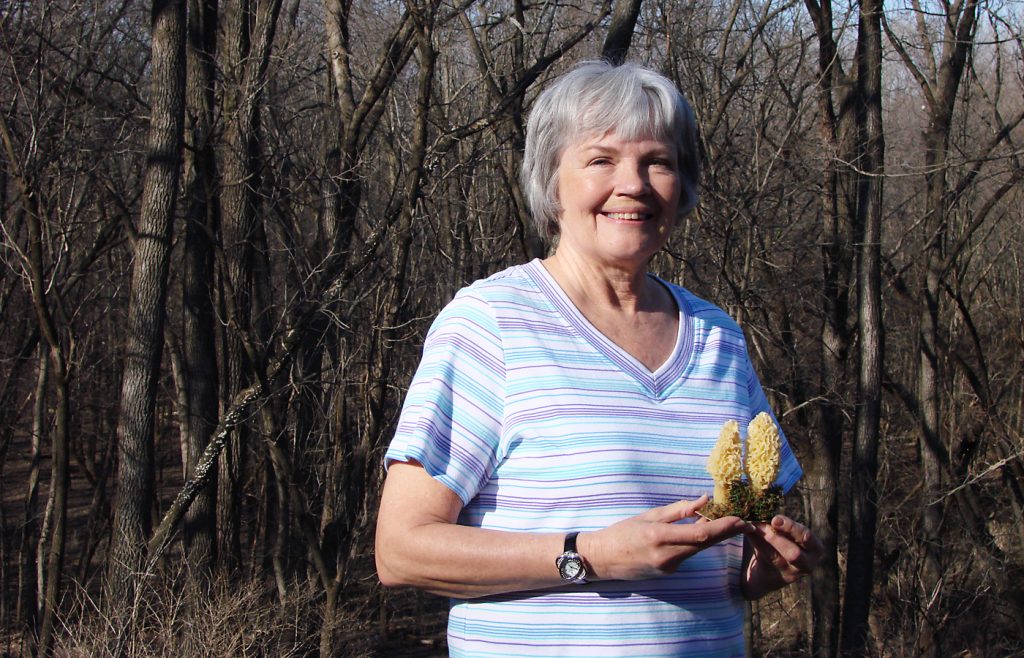
Many people plan their entire year around a single season—retailers who focus on Christmas, accountants who don’t take a day off before April 15, baseball fans who dream about Opening Day—but Mimi Hunter has opened my eyes to an entirely new season that people get fanatical about: morel mushroom season.
Mimi is a friendly retired lady who lives down my street in a two-story house (which she still paints herself) that overlooks the timber between her and Indian Creek in Cedar Rapids, Iowa. The steep, rocky area hosts more than just deer, squirrels, and May apples; that sunny northeastern slope anchors the roots of the dying elm trees that are the only source of food for this elusive spring delicacy.
About 30 years ago, Mimi was having morning coffee with a friend whose daughter walked into the kitchen with a handful of little gray mushrooms that looked like they belonged in the illustration of a fairy tale. Maybe two or three inches long and shaped like a collapsed beach umbrella, the caps were as holey as Swiss cheese, with stubby stems below. Mimi was merely curious, but her friend jumped up and announced, “We’re going morel hunting!”
The three of them spent the rest of the morning in the timber, filling three bread bags. “It was probably beginner’s luck,” Mimi recalled, “but I was hooked!” They enjoyed their treasure for lunch.
“Morels have an indescribable flavor all their own,” she said. “As opposed to a Portobello, you know you’re eating one and really savor them.” But only part of the pleasure comes from eating (and sharing) the morels. The other is the excitement of wandering around the woods in the first warm days of spring, poking dead leaves with a stick to find that little pockmarked mushroom smiling up at you.
As a novice morel hunter, Mimi would look around the base of every leafless tree in the woods, because “I had to learn what a dead elm tree looks like, so I could tell it from an oak or a black walnut.” That became easier in later seasons as she returned to her most productive hunting grounds.
“On a really good day I have filled two plastic grocery bags in one-and-a-half hours,” Mimi said. “But that depends on whether I’ve gotten there first to get the mother lode. When you do, it’s a real thrill—you relive it when you go to bed at night.” When she is lucky enough to find a good spot, she’ll head back about two days after the next rain to collect the second flush. “Of course, these days my competition is a lot younger, so not getting skunked is a good day.”
In Cedar Rapids the morel hunting season starts around April 20 and lasts about four weeks. When she first started, it was early May, but it’s gotten consistently earlier, maybe because of climate changes. She often extends her season by traveling north as the local hunting shifts from the early grays, through the bigger midseason yellow morels, to the late tan ones that grow up to 12 inches “where you almost trip over them,” she warned with a laugh.
Because Mimi would “hate to see morel hunting become a bygone pastime,” she has taken steps to help create the proper ecological balance for years to come by planting American elm seedlings. Not content to simply replenish the elms in her own backyard, over the past 15 years she has planted elms throughout Linn County in many of the areas where she hunts—sometimes adding protective chicken wire until they are big enough to resist a deer’s nibble.
She has kept careful records of her seedlings and checks their progress during the season. She hopes that “someday they’ll be abundant again and our great grandchildren will have the opportunity to find morel mushrooms.”
LaDawn Edwards is a freelance writer who found her first two morels last May and is eager to hunt for more in the 2007 season.
